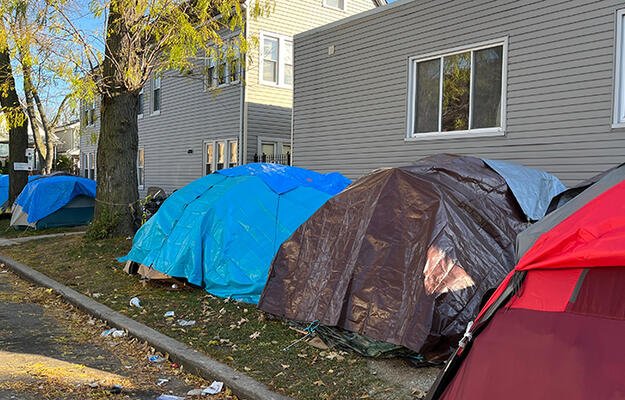
Preventing Displacement in Changing Neighborhoods
For decades after the riots that followed Martin Luther King Jr.’s assassination in 1968, Washington, D.C.’s Columbia Heights neighborhood remained scarred. Schools declined, crime rose, and businesses stayed away. The neighborhood and its residents seemed trapped in poverty.
Things have certainly changed. After a new subway station opened there in 1999, a flurry of development brought trendy restaurants and shops and an upscale supermarket. A new public plaza provides a focal point for community activities, and the landmark Tivoli Theatre—shuttered for more than a quarter-century—reopened in 2005. New schools have opened, too, including Creative Minds International Public Charter School, launched in September 2012.
But as Columbia Heights and other formerly affordable neighborhoods transform with new development, a question looms: How can cities keep rising rents and property taxes from displacing longtime, lower-income residents?
Experts say the most important step is doing as much as possible to protect and create affordable housing.
“For people to benefit from the positive things that have happened,” says Peter Tatian, senior fellow at the Urban Institute, “they need to be able to have the opportunity to stay in that neighborhood.”
Turning Back Expiring Affordability
One way to keep low-income residents from being priced out of growing neighborhoods, Tatian says, is to protect federally subsidized affordable housing units. Through programs such as project-based Section 8 housing, low-income housing tax credits, and Section 236 projects, the federal government gives developers or property owners a subsidy. In return, a certain number of units rent at a lower rate for as many as thirty or forty years.
Experts like Tatian and Dan Rinzler, manager of special projects and initiatives at the Low Income Investment Fund, a nonprofit community development organization in San Francisco, warn that a large number of such properties across the nation will soon expire unless owners opt to renew.
“The challenge is to try to keep those properties affordable and try to keep them in place, because it would be difficult, if not impossible, to replace them at this point,” says Tatian.
Converting Public Sites
Public buildings put up for sale by the city or county can provide another source of affordable housing, says Don Falk, chief executive officer of the Tenderloin Neighborhood Development Corporation, a nonprofit provider of affordable housing for low-income residents of San Francisco. Municipalities can dedicate the sites to affordable housing, rather than letting them be turned into market-rate housing.
The District of Columbia took that step in Columbia Heights, where it negotiated with developers to create 250 affordable units in place of city buildings damaged by the riots.
“There’s a market for the sale of publicly owned sites, and in some cases, the public sector entity is required [by the local government] to offer nonprofits a ‘right of first offer’ or ‘right of first refusal,’ ” says Falk.
In San Francisco, nonprofit organizations have taken advantage of that right. Falk says that approximately 25 percent of residential property in the Tenderloin, a neighborhood in downtown San Francisco, is owned by nonprofit groups or the city. Municipal regulations ensure that units in rental properties bought in this way are earmarked for low-income residents.
“One could say that the Tenderloin is an example of what we are trying to achieve,” Falk says.
Promoting Inclusionary Housing
Many U.S. cities and counties, including Boulder, Colorado, and Montgomery County, Maryland, have taken the “inclusionary zoning” approach, Tatian says. In these places, ordinances require or offer incentives for real estate developers to set aside 10 to 30 percent of their housing units for lower-income families.
Researchers estimate that inclusionary housing ordinances have made 150,000 affordable housing units available nationwide over several decades. And a study by the RAND Corporation, a public policy think tank, finds that more than three-quarters of homes created by inclusionary housing programs are located in low-poverty neighborhoods.
But in Columbia Heights, even a host of policies that favored low-income tenants and homebuyers, including inclusionary zoning passed in 2006, was unable to stop the neighborhood from losing a large percentage of black and Latino residents.
Falk says that no matter how difficult it may be to prevent displacement, communities have to keep looking for ways to help low-income people stay in their homes and neighborhoods.
“It’s what a just and civil society is about,” he says. “The heart of equity is that everybody has an equal opportunity regardless of their background, their race, their culture, the circumstances they were born into.”


